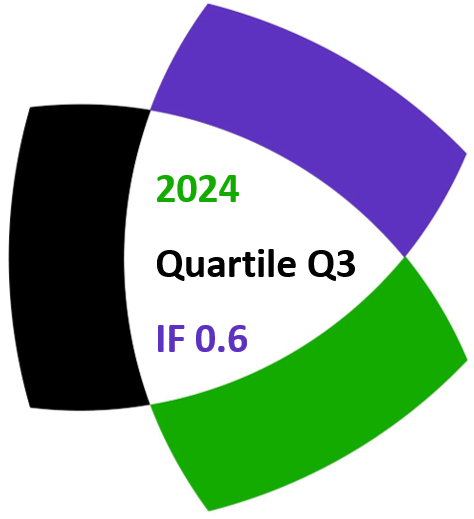Milen V. Velev
Notes on Number Theory and Discrete Mathematics
Print ISSN 1310–5132, Online ISSN 2367–8275
Volume 30, 2024, Number 2, Pages 335–356
DOI: 10.7546/nntdm.2024.30.2.335-356
Full paper (PDF, 1.8 Mb)
Details
Authors and affiliations
Milen V. Velev ![]()
![]()
![]()
University “Prof. Dr. Asen Zlatarov”
1, Prof. Yakim Yakimov Str., 8010 Burgas, Bulgaria
Abstract
This research work presents the topic of infinite multisets, their basic properties and cardinality from a somewhat different perspective. In this work, a new property of multisets, ‘m-cardinality’, is defined using multiset functions. M-cardinality unifies and generalizes the definitions of cardinality, injection, bijection, and surjection to apply to multisets. M-cardinality takes into account both the number of distinct elements in a multiset and the number of copies of each element (i.e., the multiplicity of the elements). Based on m-cardinality, ‘m-cardinal numbers’ are defined as a generalization of cardinal numbers in the context of multisets. Some properties of m-cardinal numbers associated with finite and infinite msets have been researched. Concrete examples of transfinite m-cardinal numbers are given, corresponding to infinite msets which are less than ℵ0 (the cardinality of the countably infinite set). It has been established that between finite numbers and ℵ0 there exist hierarchies of transfinite m-cardinals, corresponding to infinite msets. Furthermore, there are examples of infinite msets with negative multiplicity that have a cardinality less than zero. We prove that there is a decreasing sequence of transfinite m-cardinal numbers, corresponding to infinite msets with negative multiplicity, and in this sequence, there is not a smallest transfinite m-cardinal number.
Keywords
- Multiset theory
- M-cardinality
- Infinite multiset
- M-cardinal numbers
2020 Mathematics Subject Classification
- 03E10
- 03E75
References
- Blizard, W. D. (1989). Multiset theory. Notre Dame Journal of Formal Logic, 30(1), 36–66.
- Blizard, W. D. (1989). Real-valued multisets and fuzzy sets. Fuzzy Sets and Systems, 33, 77–97.
- Blizard, W. D. (1990). Negative membership. Notre Dame Journal of Formal Logic, 31(1), 346–368.
- Blizard, W. D. (1991). The development of multiset theory. Modern Logic, 1(4), 319–352.
- Da F. Costa, L. (2021). Multisets. Available online at: https://hal.science/hal-03388935/.
- Girish, K. P., & John, S. J. (2009). Relations and functions in multiset context. Information Sciences, 179(6), 758–768.
- Singh, D., Ibrahim, A. M., Yohanna, T., Singh, J. N. (2007). An overview of the applications of multisets. Novi Sad Journal of Mathematics, 37(2), 73–92.
- Singh, D., Ibrahim, A. M., Yohana, T., Singh, J. N. (2011). Complementation in Multiset Theory. International Mathematical Forum, 6(38), 1877–1884.
- Syropoulos, A. (2001). Mathematics of Multisets. In: Calude, C.S., Păun, G., Rozenberg, G., Salomaa, A. (eds) Multiset Processing. WMC 2000. Lecture Notes in Computer Science, vol 2235. Springer, Berlin, Heidelberg. Available online at:
https://doi.org/10.1007/3-540-45523-X_17.
Manuscript history
- Received: 17 September 2023
- Revised: 5 March 2024
- Accepted: 15 April 2024
- Online First: 20 May 2024
Copyright information
![]() Ⓒ 2024 by the Author.
Ⓒ 2024 by the Author.
This is an Open Access paper distributed under the terms and conditions of the Creative Commons Attribution 4.0 International License (CC BY 4.0).
Related papers
Cite this paper
Velev, M. V. (2024). Infinite multisets: Basic properties and cardinality. Notes on Number Theory and Discrete Mathematics, 30(2), 335-356, DOI: 10.7546/nntdm.2024.30.2.335-356.


